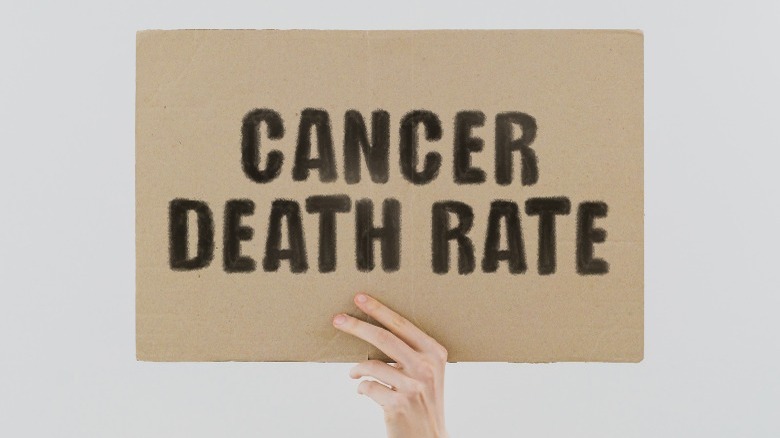The Newly Released Annual Report On National Cancer Statistics Offers Some Great News
The World Health Organization (WHO) states that cancer results from how a person's genes interact with carcinogens, like ultraviolet (UV), certain bacterial or viral infections, alcohol, and tobacco smoke, among other things. Other factors can increase the odds of developing cancer like air pollution, poor diet, and a lack of physical activity.
According to a 2022 review published in the journal Nature, early onset cancer rates (cancer diagnosis for people ages 50 and under) are on the rise. The researchers from Brigham and Women's Hospital found that since 1990, early onset cancer rates have risen globally, with each generation facing a greater risk of developing cancer than the generation before (via The Harvard Gazette). This is known as the birth cohort effect, and the researchers think that factors like some of the ones mentioned by the WHO may be involved, including alcohol consumption, poor diet, and smoking.
But cancer is not just a chronic disease that can only affect a person's quality of life: it can also end it. According to the Centers for Disease Control and Prevention, cancer is the second leading cause of death in the United States – second only to heart disease. Fortunately, a newly released annual report on national cancer statistics in the United States offers some positive news about cancer death rates.
Cancer death rates are on the decline in the U.S.
According to the National Cancer Institute's Annual Report to the Nation on the Status of Cancer, overall cancer death rates are on the decline in the United States. The report, which provides information on national cancer death rates for adults, children aged 0 to 14, and adolescents and young adults aged 15 to 39, issued its findings for the years 2015-2019. The data revealed that on average, cancer death rates for males fell by 2.3% per year and 1.9% per year for females. Further, cancer death rates lowered on average for children by 1.5% per year and 0.9% per year for adolescents and young adults.
Over the span of 2015-2019, the overall cancer death rates for males and females together fell by 2.1% each year, reports U.S. News and World Report. Notably, the type of cancer that kills the most people — lung cancer — decreased by 4% each year. Cancer death rates were not experienced equally though. For starters, while Black or white men did not see a decrease in prostate cancer deaths, there was a decrease in Hispanic men. Additionally, amid the decreased rates of death from breast cancer for the majority of women, American Indian women experienced a rise in breast cancer death rates.


